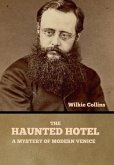Trent's Last Case (1913) is a detective novel by E.C. Bentley. Adapted three times for the cinema-including a 1952 feature film starring Michael Wilding, Orson Welles, and Margaret Lockwood-Trent's Last Case, which was titled The Woman in Black in the U.S., earned the acclaim of such writers as Dorothy L. Sayers, and was followed by a sequel and a collection of short stories involving its main character. When Sigsbee Manderson, a prominent American plutocrat, is murdered at his country estate in southwest England, Philip Trent, an amateur detective and freelance journalist, is hired to investigate the case. Aided by police, Trent begins his examination of the facts and evidence. Granted access to the body as well as the grounds of White Gables, Manderson's estate, Trent concludes his investigation with a series of interviews. Beginning with Manderson's wife, he uses his journalistic skill to collect information from the plutocrat's secretaries, servant, and maid, as well as Nathaniel Cupples, Mrs. Manderson's uncle and an old friend of Trent's. When the coroner's report is released, and in coordination with his own research, evidence suggests that Manderson was murdered due to some unknown business vendetta. There is reason to believe, however, that his death could have something to do with his troubled marriage, a possibility complicated by Trent's growing attraction to Mabel, his widow. Unable to reach a conclusion, Trent embarks for Latvia to work as a traveling correspondent, but no matter how much time or distance he places between himself and White Gables, the questions and the mystery remain. Trent's Last Case is a masterful detective novel by a writer whose reputation has unjustly faded over the past several decades. With a beautifully designed cover and professionally typeset manuscript, this edition of E.C. Bentley's Trent's Last Case is a classic of English detective fiction reimagined for modern readers.








